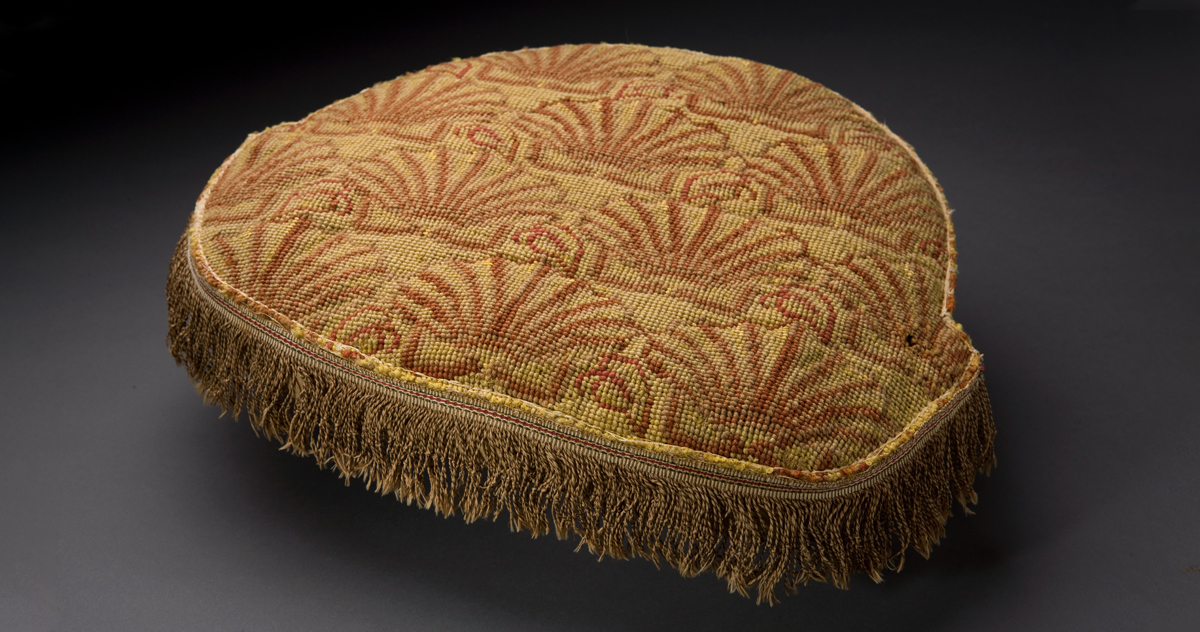OBJECT SPOTLIGHT
Notable Needlework
Martha Washington’s shell cushions—featuring a distinctive scallop shell and leaf pattern—are the best known examples of her needlework. The loose cushions are the only ones of this type that survive in America south of Pennsylvania. Mrs. Washington worked them in cross-stitch, with wool yarn and silk highlights on a linen or hemp canvas ground, in what may have been a pattern of her own design. By one estimate, the full set of a dozen cushions required more than 752,000 stitches. The ambitious project took her longer than she may have imagined. Though the materials arrived from London in 1766, it wasn’t until 35 years later, in the “70th year of her age,” according to her granddaughter, Eleanor (Nelly) Parke Custis Lewis, that she completed the cushions.
Life intervened, including the death of Martha's own children, eight years of war, raising grandchildren, and eight years of public service as the president’s wife. At some point, she laid her work aside in her bedchamber closet. In 1794, she asked her niece at Mount Vernon to send the materials to Philadelphia, “as I intend to have them made into some thing if they are not spoiled and Eaten up with the moth.” She originally intended to upholster slip seats for formal side chairs, but ultimately had the embroidered canvases fabricated into cushions for Windsor armchairs, with a multicolor, hand-knotted silk and wool fringe along the front.
Each cushion is a rare documented example of Lady Washington’s needlework and original upholstery at Mount Vernon, as well as a testimony to her determination and resilience. Despite the unexpected circumstances of her life, she chose not to discard what she had started, but to adapt, and to realize a new purpose for them. Martha Washington gave the cushions to each of her three granddaughters, who lovingly preserved them.

